Submitted:
10 May 2023
Posted:
11 May 2023
Read the latest preprint version here
Abstract
Keywords:
MSC: 11D61; 11D85
1. Composite numbers of the form
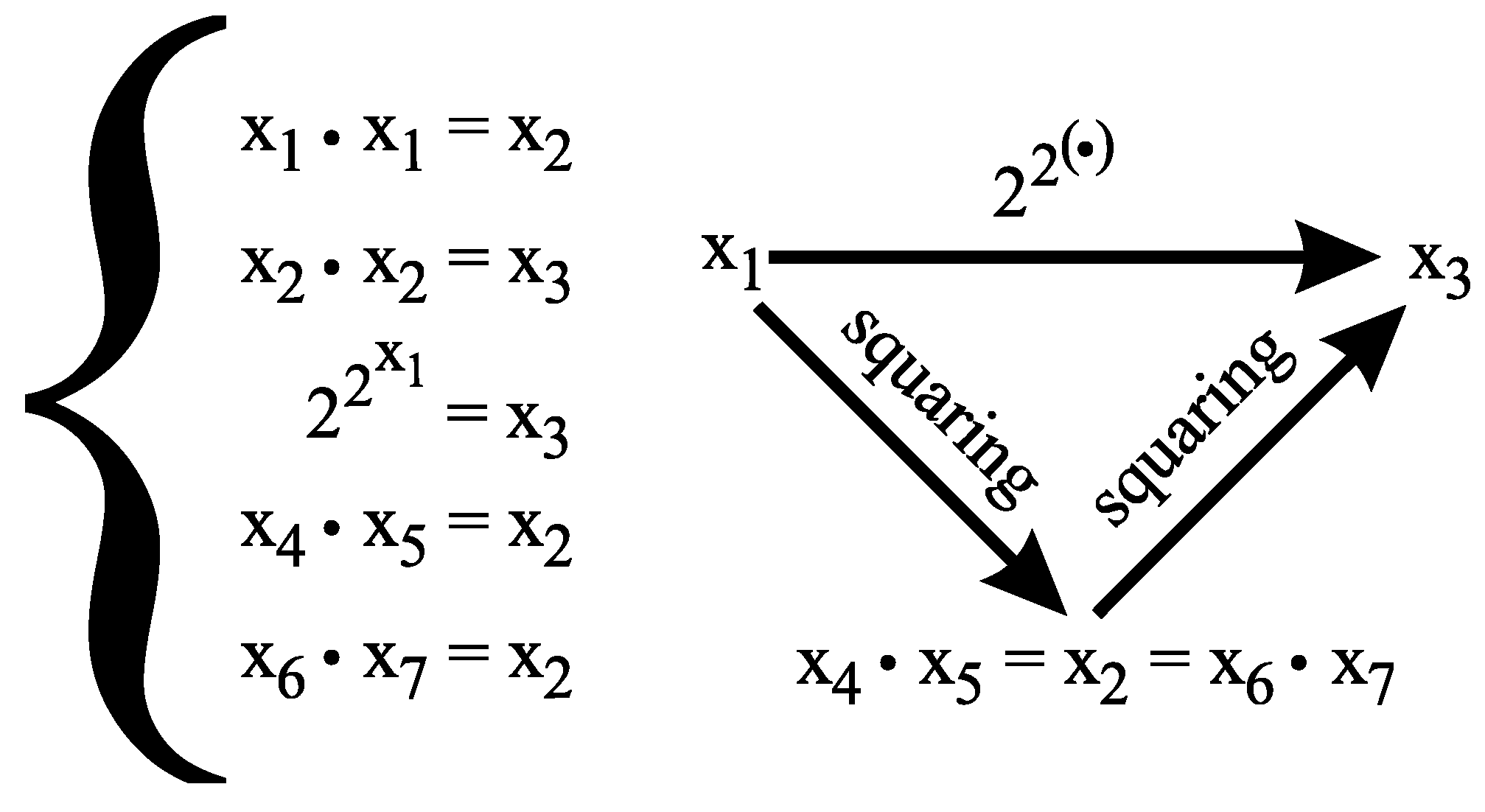 has exactly one solution in , namely .
has exactly one solution in , namely .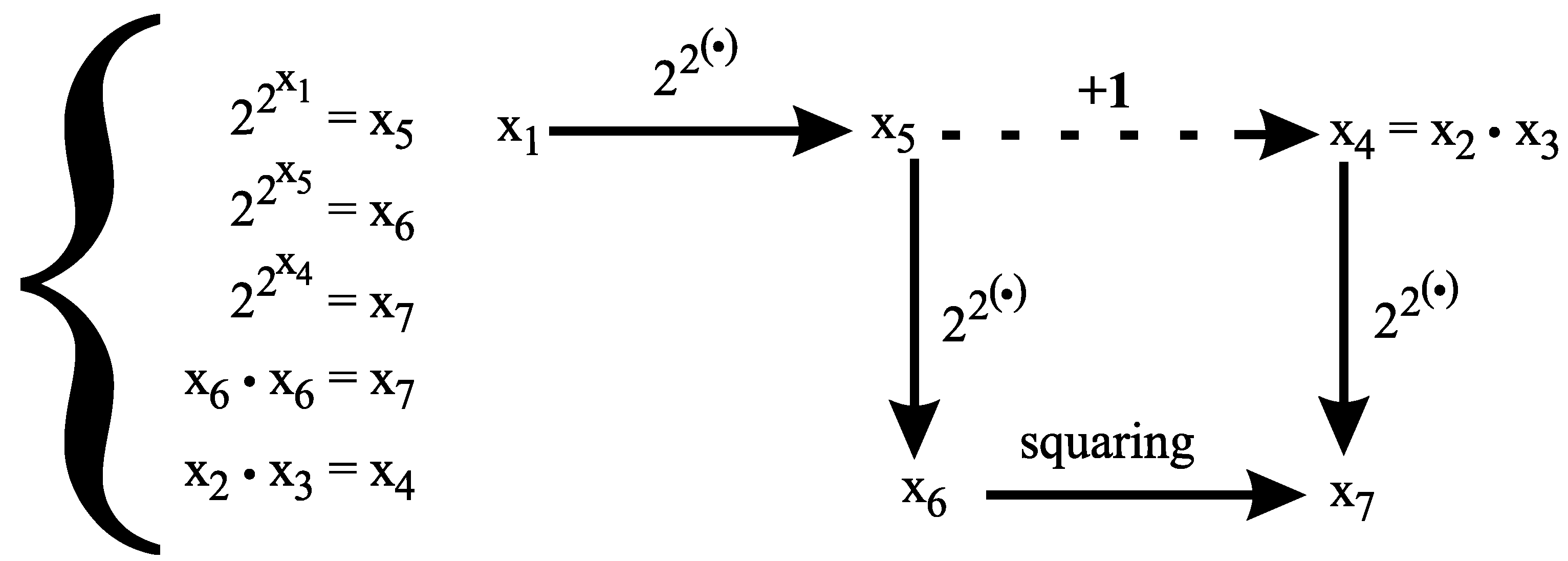 has at most finitely many solutions in and expresses that
has at most finitely many solutions in and expresses that
2. The Brocard-Ramanujan equation
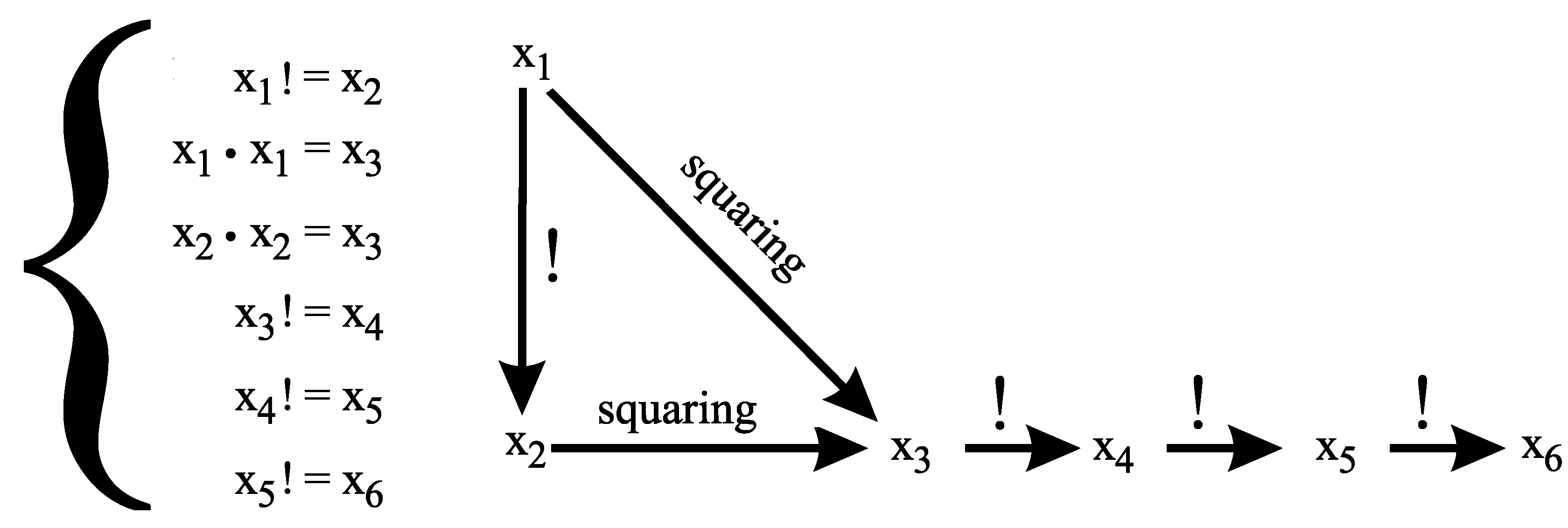 has exactly two solutions in positive integers, namely and .
has exactly two solutions in positive integers, namely and . is a subsystem of . By Lemma 2, in positive integers, the system expresses that or
is a subsystem of . By Lemma 2, in positive integers, the system expresses that or
3. Erdös’ equation
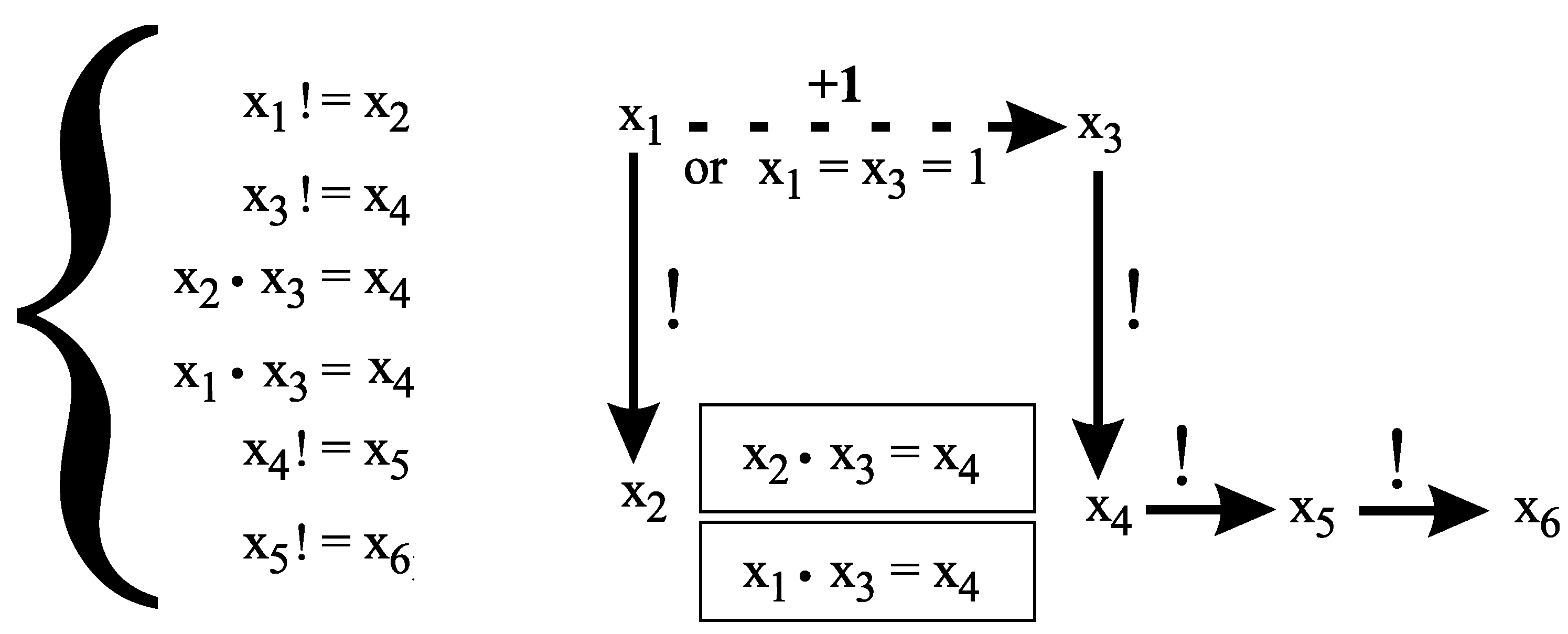 has exactly three solutions in positive integers, namely , , and .
has exactly three solutions in positive integers, namely , , and .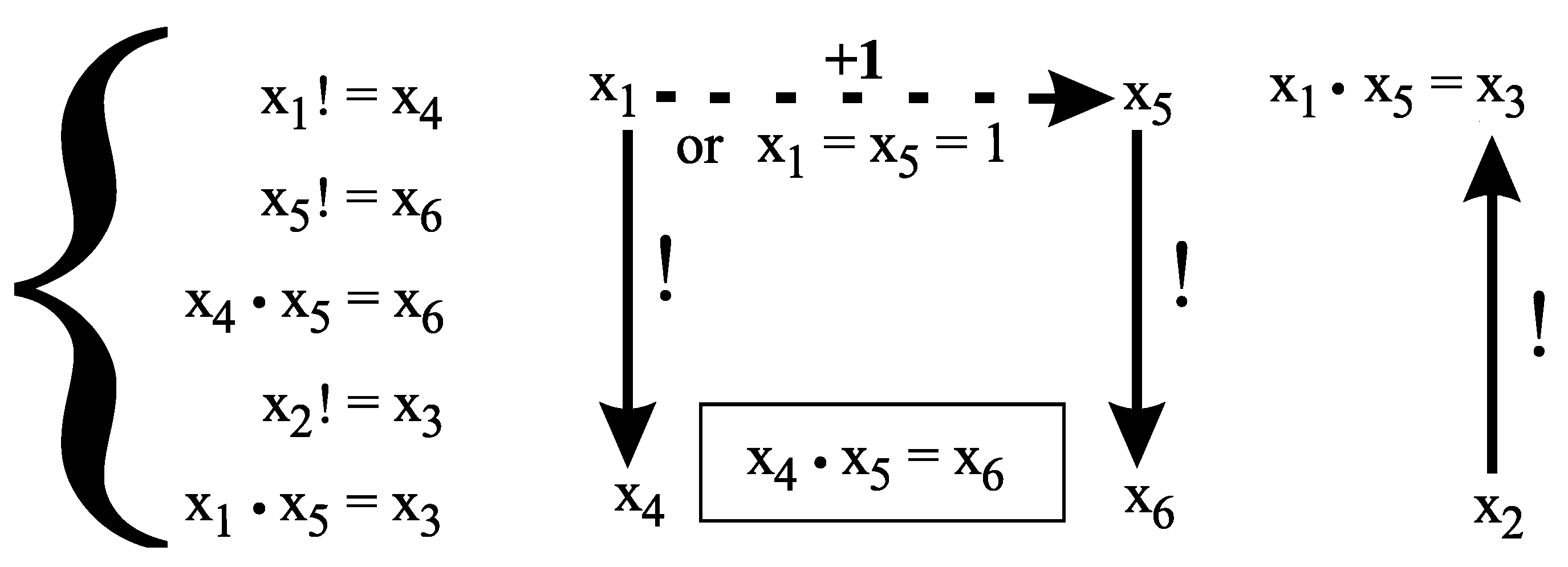 is a subsystem of . By Lemma 2, in positive integers, the system expresses that or
is a subsystem of . By Lemma 2, in positive integers, the system expresses that or
returns 2 and 3. □for x2 from 1 to 720 dox1:=round(sqrt(x2!+(1/4))-(1/2)):if x1*(x1+1)=x2! then print(x2) end_if:end_for:
4. Hypotheses 2 and 3 cannot be generalized to an arbitrary number of variables

5. Equivalent forms of Hypotheses 1–3
- (1)
- If and , then the equation belongs to when it belongs to .
- (2)
- If and , then the equation belongs to when it belongs to .
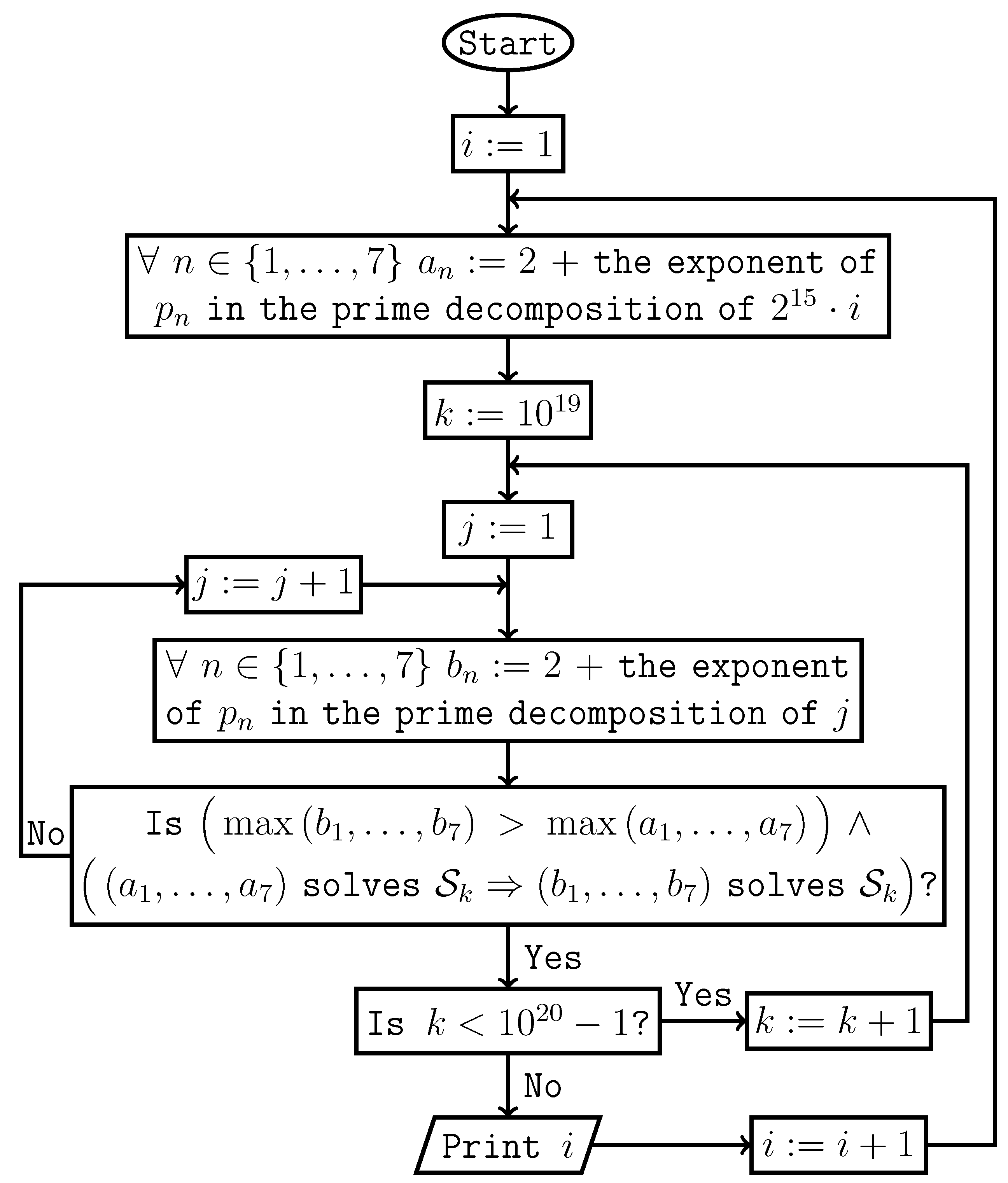 If Hypothesis 1 is true, then endlessly prints consecutive positive integers starting from 1. If Hypothesis 1 is false, then prints a finite number (including zero) of consecutive positive integers starting from 1.
If Hypothesis 1 is true, then endlessly prints consecutive positive integers starting from 1. If Hypothesis 1 is false, then prints a finite number (including zero) of consecutive positive integers starting from 1.
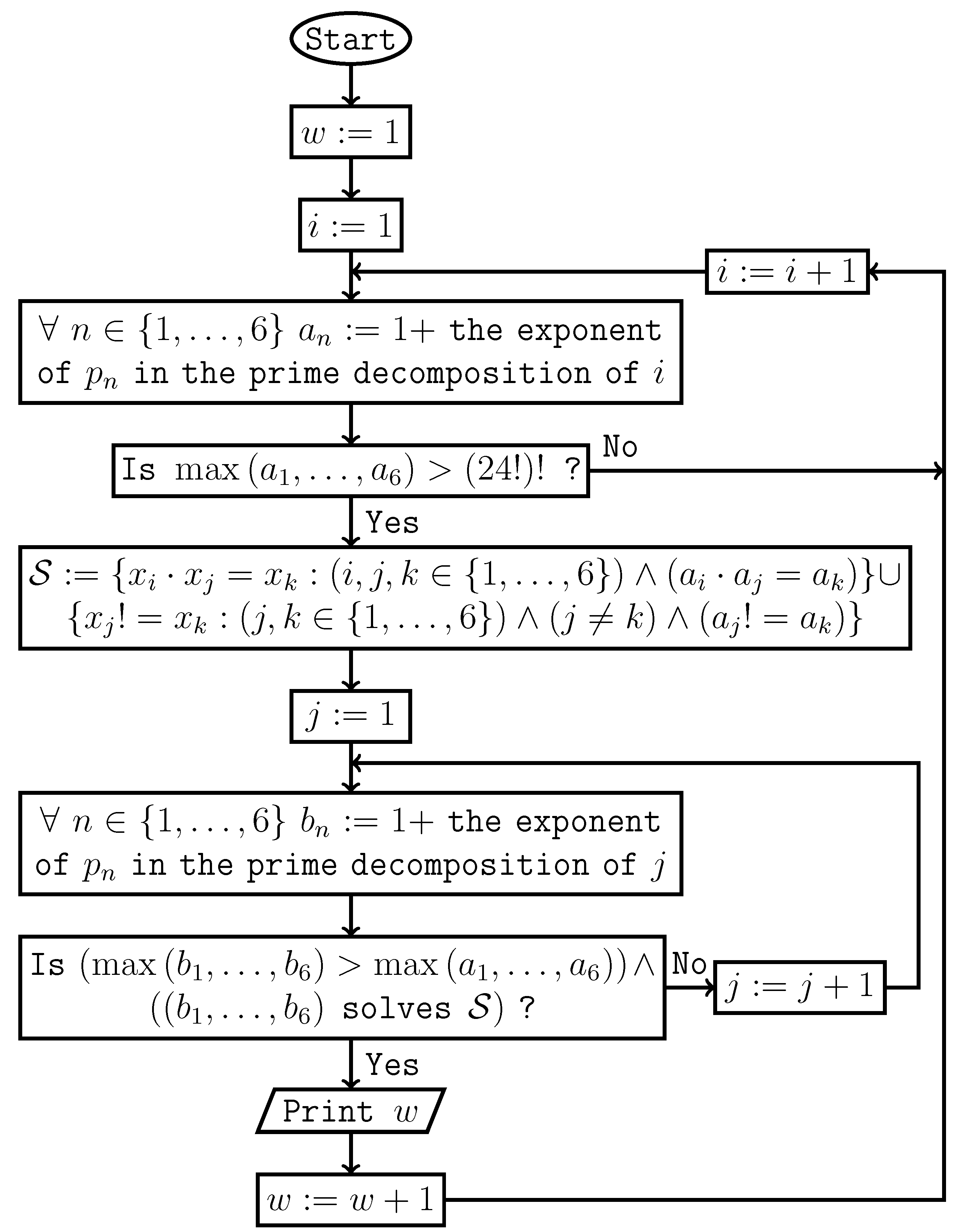 If Hypothesis 2 is true, then endlessly prints consecutive positive integers starting from 1. If Hypothesis 2 is false, then prints a finite number (including zero) of consecutive positive integers starting from 1.
If Hypothesis 2 is true, then endlessly prints consecutive positive integers starting from 1. If Hypothesis 2 is false, then prints a finite number (including zero) of consecutive positive integers starting from 1.
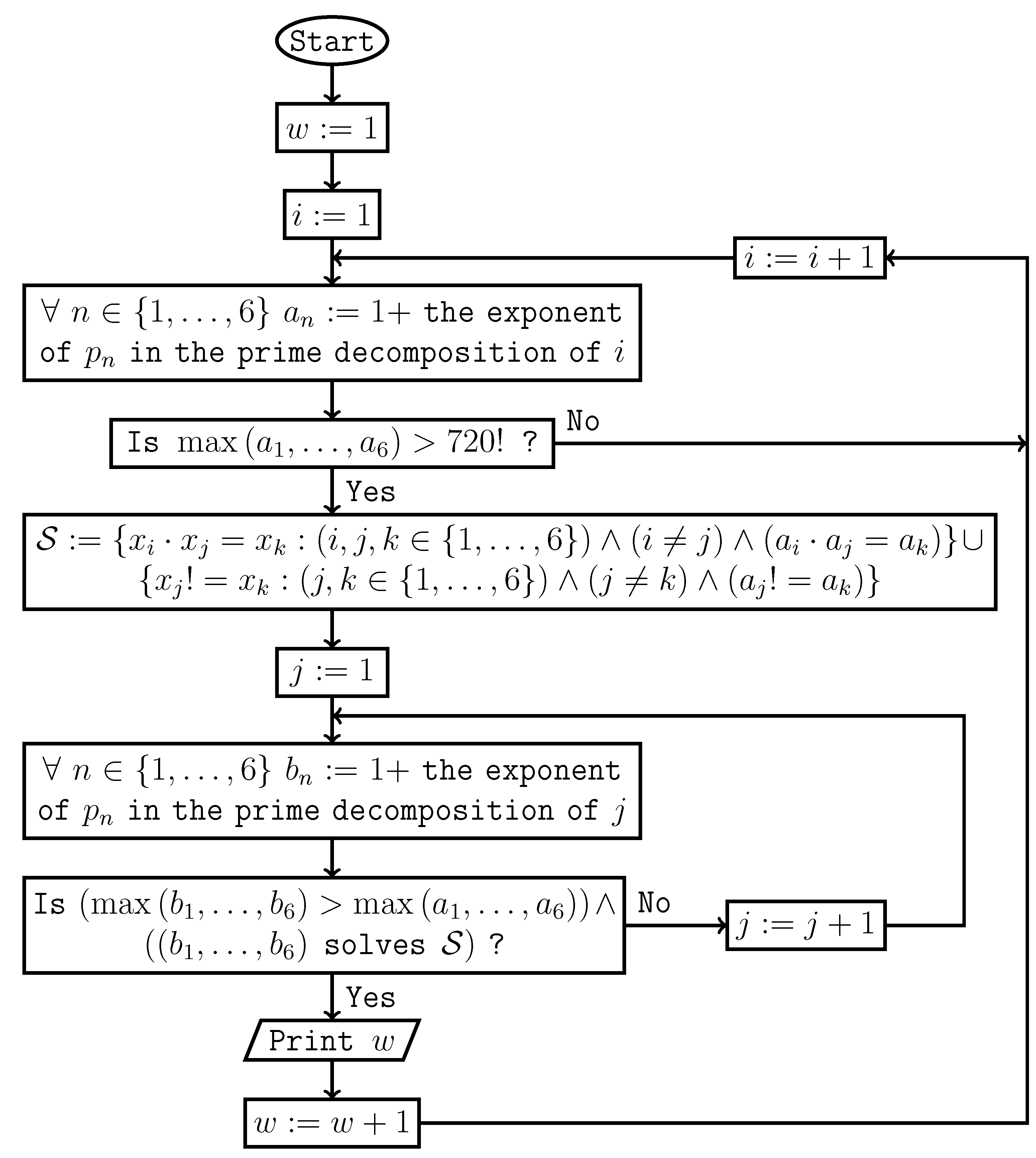 If Hypothesis 3 is true, then endlessly prints consecutive positive integers starting from 1. If Hypothesis 3 is false, then prints a finite number (including zero) of consecutive positive integers starting from 1.
If Hypothesis 3 is true, then endlessly prints consecutive positive integers starting from 1. If Hypothesis 3 is false, then prints a finite number (including zero) of consecutive positive integers starting from 1.
References
- D. Berend and J. E. Harmse, On polynomial-factorial Diophantine equations, Trans. Amer. Math. Soc. 358 (2006), no. 4, 1741–1779. [CrossRef]
- J.-M. De Koninck and F. Luca, Analytic number theory: Exploring the anatomy of integers, American Mathematical Society, Providence, RI, 2012.
- M. Křížek, F. Luca, L. Somer, 17 lectures on Fermat numbers: from number theory to geometry, Springer, New York, 2001. [CrossRef]
- F. Luca, The Diophantine equation P(x) = n! and a result of M. Overholt, Glas. Mat. Ser. III 37 (57) (2002), no. 2, 269–273.
- Yu. Matiyasevich, Existence of noneffectivizable estimates in the theory of exponential Diophantine equations, J. Sov. Math. vol. 8, no. 3, 1977, 299–311. [CrossRef]
- M. Overholt, The Diophantine equation n! + 1 = m2, Bull. London Math. Soc. 25 (1993), no. 2, 104. [CrossRef]
- A. Tyszka, A hypothetical upper bound on the heights of the solutions of a Diophantine equation with a finite number of solutions, Open Comput. Sci. 8 (2018), no. 1, 109–114. [CrossRef]
- E. W. Weisstein, CRC Concise Encyclopedia of Mathematics, 2nd ed., Chapman & Hall/CRC, Boca Raton, FL, 2002. [CrossRef]
Disclaimer/Publisher’s Note: The statements, opinions and data contained in all publications are solely those of the individual author(s) and contributor(s) and not of MDPI and/or the editor(s). MDPI and/or the editor(s) disclaim responsibility for any injury to people or property resulting from any ideas, methods, instructions or products referred to in the content. |
© 2023 by the authors. Licensee MDPI, Basel, Switzerland. This article is an open access article distributed under the terms and conditions of the Creative Commons Attribution (CC BY) license (http://creativecommons.org/licenses/by/4.0/).




